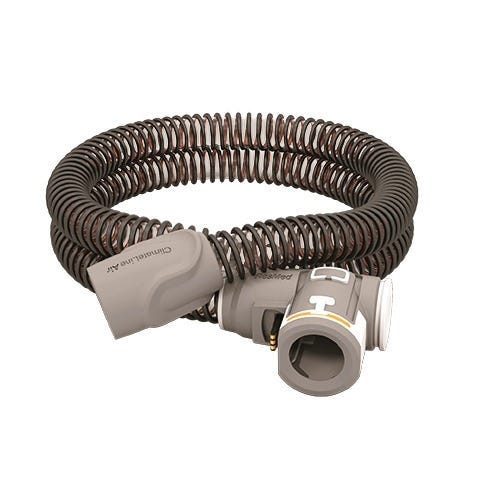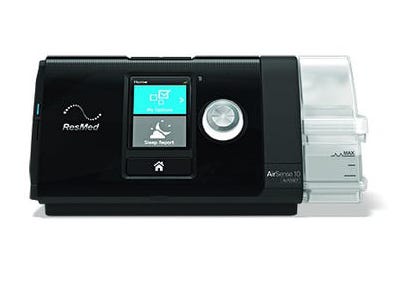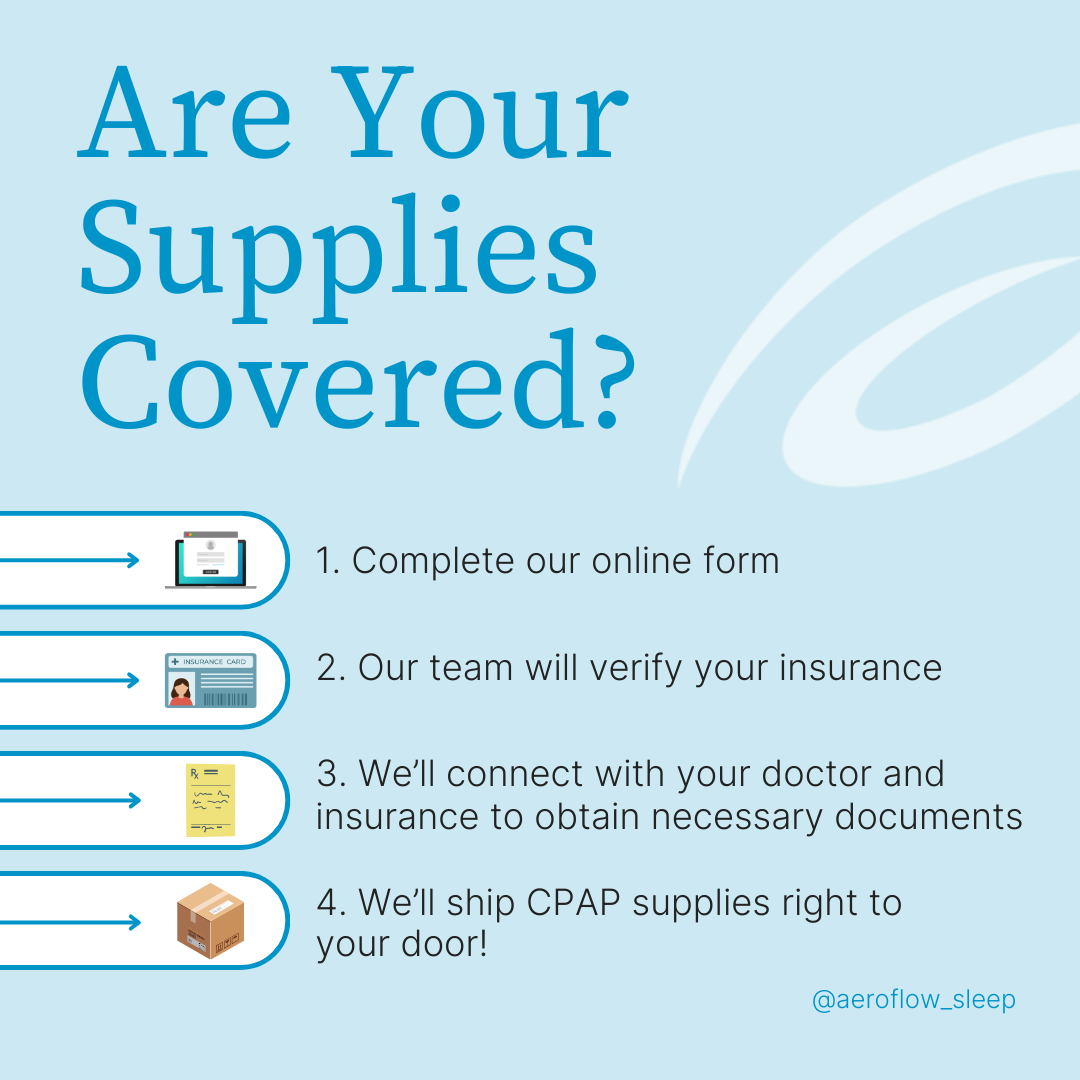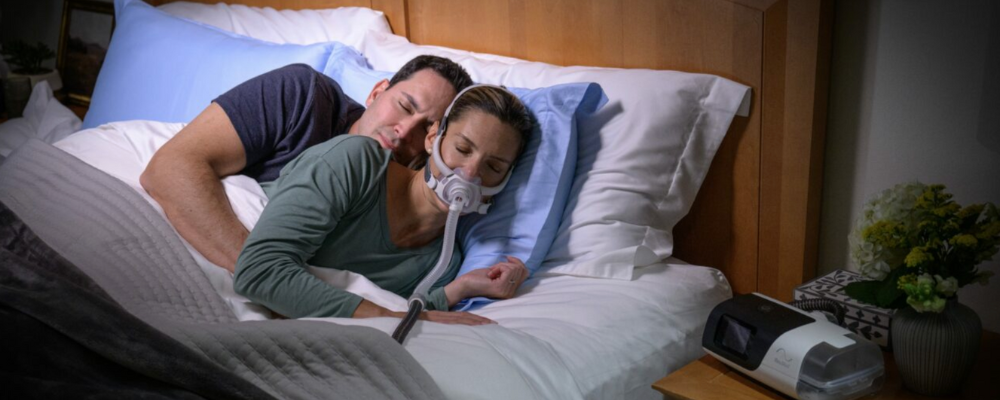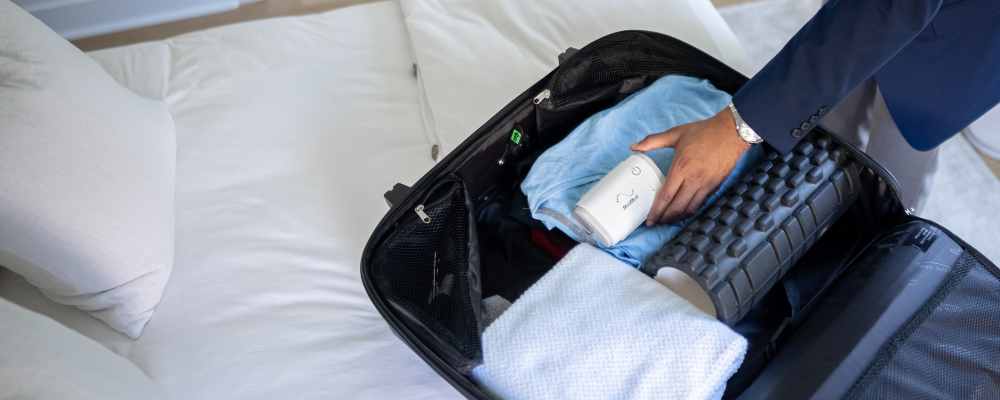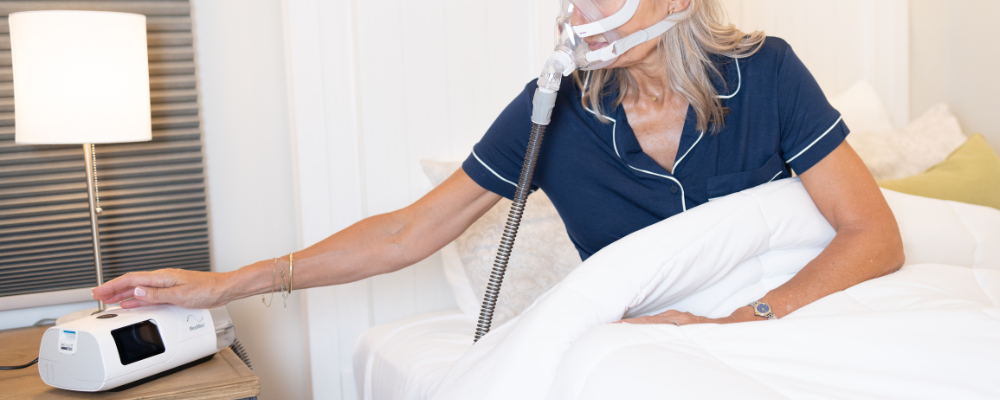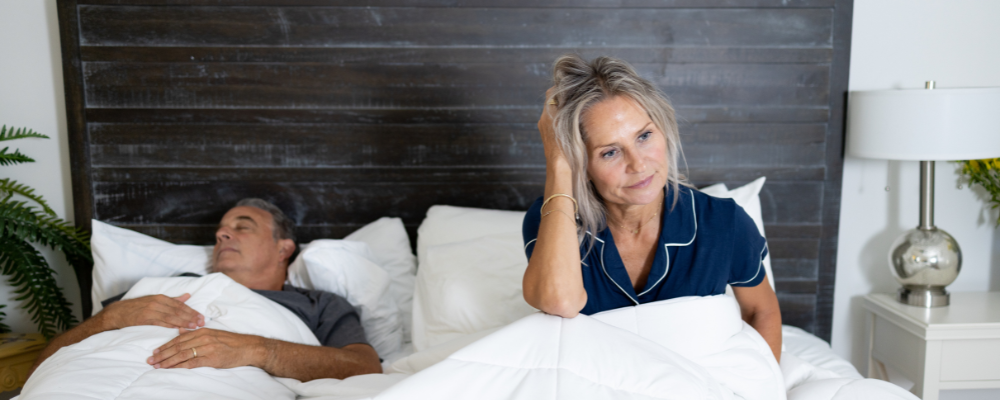Every CPAP user knows that sleep apnea patients need standard CPAP supplies, such as a CPAP machine, mask, and tubing, to get a good night's rest. Anything else is considered a luxury—until you try it. Heated tubing is one such piece that many consider a necessity.
This guide will answer common questions about heated CPAP tubing, including how it fits into your existing CPAP therapy and whether Aeroflow Sleep can get yours covered up to 100% through insurance.
IN THIS ARTICLE:
- 1. How Do I Make My CPAP Air Warmer?
- 2. What Is The Benefit Of Heated CPAP Tubing?
- 3. How Does Heated CPAP Tubing Work?
- 4. What Should You Set Your CPAP Tube Temperature To?
- 5. Is The Temperature Adjustment On CPAP For Water And Hoses?
- 6. Do I Need Heated CPAP Tubing And A Heated CPAP Humidifier?
- 7. How Do You Clean Heated CPAP Tubing?
- 8. How Long Do Heated CPAP Tubes Last?
- 9. Will Insurance Cover Heated CPAP Tubing?
1. How Do I Make My CPAP Air Warmer?
First, let’s discuss why heated tubing for CPAP machines is even a thing. Standard tubing comes with your CPAP machine because it needs to connect between your CPAP machine and CPAP mask. That’s fine if you’re happy with the temperature of the air you breathe through your CPAP mask. However, a common complaint among patients is that the air is too cold.
The easiest way to make the air coming out of your CPAP machine warmer is to purchase heated tubing, which will warm the air as it travels from your CPAP machine to your mask.
2. What Is The Benefit Of Heated CPAP Tubing?
The primary benefit of heated CPAP tubing is comfort, but it also helps maintain your CPAP therapy over longer periods of time. Heated tubing allows airflow to hold more moisture rather than dispense condensation or "rainout."
Rainout is when air gets trapped in your tubing and cools, becoming water. The air pressure pushes the water through to your CPAP mask instead of warm air. No one wants to wake up with a damp face or runny nose.
Heated CPAP tubing can also reduce the need for a CPAP humidifier. When used together, heated tubing works harmoniously with your humidifier to give you measured and controlled heat. The best product pairing that offers this benefit is ResMed’s ClimateLine Heated Tubing and H5i Humidifier.
Finally, heated tubing helps prevent side effects like dry mouth, nose, sore throat, and nasal irritation.
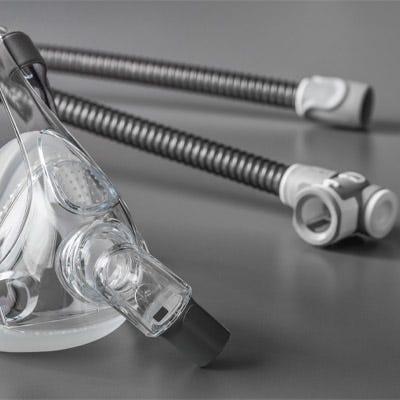

3. How Does Heated CPAP Tubing Work?
Heated CPAP tubing works by passing an electric current through coils of copper wire that run through the length of the hose. However, these added components don’t make it heavier than standard tubing. Most manufacturers—namely Philips Respironics and Fisher & Paykel—have designed their heated tubing to be lightweight and provide additional flexibility with 6 feet of hose.
4. What Should You Set Your CPAP Tube Temperature To?
According to ResMed, your CPAP tube temperature should be set between 60-86℉. ResMed AirSense 10 CPAP Machines use a Climate Control system, and its default setting is 81℉. You can access Manual Mode anytime to change the temperature and make it more comfortable.
Other CPAP manufacturers offer similar settings on their machines and recommend similar temperatures. That said, don’t get confused when you see both tube temperature and humidity level; they are two different settings.
5. Is The Temperature Adjustment On CPAP For Water And Hoses?
Most modern CPAP machines allow you to control the heated CPAP tubing temperature and the humidifier’s water chamber settings. This allows you to find the perfect balance of warmth and humidity, ensuring that both the air in your tube and the water in your humidifier are at comfortable levels. By fine-tuning these settings, you can achieve a more effective CPAP therapy experience.
6. Do I Need Heated CPAP Tubing And A Heated CPAP Humidifier?
As previously mentioned, heated tubing works well with your humidifier, but using a heated humidifier alongside heated tubing may be excessive.
A humidifier controls the amount of water vapor in the air and ultimately attacks dryness. If dry air is causing you to wake up with a dry mouth, you want a stronger humidification level. You can adjust this just as easily as the temperature on CPAP machines. Still, a heated CPAP humidifier also adds the element of temperature, doubling your warm air when used with CPAP heated tubing.
If you’re experiencing dryness despite increasing the humidity, you may want to consider a heated CPAP humidifier. ResMed recommends increasing your overall temperature by 1-2 ℉ to start.
7. How Do You Clean Heated CPAP Tubing?
Yes, you can wash heated CPAP tubing with mild soap and water and should do so every week. Avoid soaking it, and make sure it’s completely dry before reattaching it to your CPAP device.
If you want to know how to clean heated CPAP hose more thoroughly, try a half-and-half solution of vinegar and soapy water. The vinegar recipe works well for most general cleaning purposes and is easy to do yourself. However, you still need to make sure it’s completely dry.
8. How Long Do Heated CPAP Tubes Last?
Heated CPAP tubing only lasts 3 months, the same as standard tubing. It’s important to replace your CPAP equipment because, over time, allergens, mold, and bacteria can get trapped in your CPAP supplies and make you sick.
If you haven’t replaced your tubing recently, it’s time to contact Aeroflow Sleep.
9. Will Insurance Cover Heated CPAP Tubing?
At Aeroflow Sleep, your heated CPAP tubing may be covered up to 100% through insurance with a doctor’s prescription. We work with your insurance provider and primary care physician to find you the best coverage possible for all your CPAP supply needs.
From CPAP and BiPAP machines to nasal CPAP masks, full-face masks, and every other attachment, we have the perfect products for you.
Fill out our eligibility form to see if you qualify for heated CPAP tubing through insurance. This quick and simple step can help you achieve a more comfortable, effective CPAP therapy experience.



